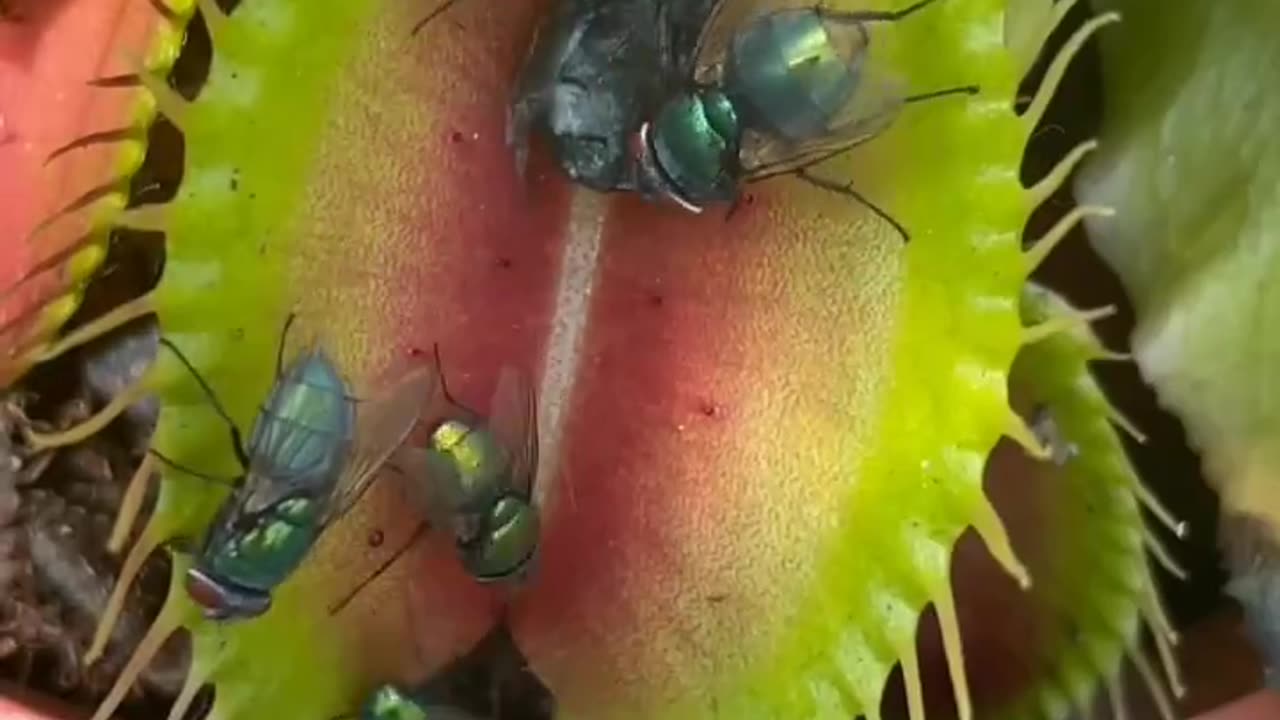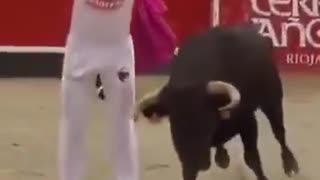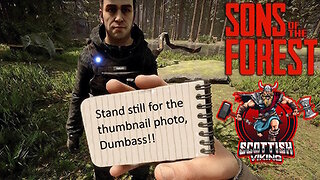Premium Only Content

Venus fly trap - Carnivorous plant
Venus fly trap - Carnivorous plant
The Venus flytrap (Dionaea muscipula) is a carnivorous plant native to the temperate and subtropical wetlands of North Carolina and South Carolina, on the East Coast of the United States. Although various modern hybrids have been created in cultivation, D. muscipula is the only species of the monotypic genus Dionaea. It is closely related to the waterwheel plant (Aldrovanda vesiculosa) and the cosmopolitan sundews (Drosera), all of which belong to the family Droseraceae. Dionaea catches its prey—chiefly insects and arachnids—with a "jaw"-like clamping structure, which is formed by the terminal portion of each of the plant's leaves; when an insect makes contact with the open leaves, vibrations from the prey's movements ultimately trigger the "jaws" to shut via tiny hairs (called "trigger hairs" or "sensitive hairs") on their inner surfaces. Additionally, when an insect or spider touches one of these hairs, the trap prepares to close, only fully enclosing the prey if a second hair is contacted within (approximately) twenty seconds of the first contact. Triggers may occur as quickly as 1⁄10 of a second from initial contact
The Venus flytrap is a flowering plant best known for its carnivorous eating habits. The “trap” is made of two hinged lobes at the end of each leaf. On the inner surfaces of the lobes are hair-like projections called trichomes that cause the lobes to snap shut when prey comes in contact with them. This type of movement is called thigmonasty—a nondirectional plant response to being touched. To prevent the plant from wasting energy if prey isn’t actually there, the trap will only shut when the trichomes are touched multiple times. The hinged traps are edged with small bristles that interlock when the trap shuts to ensure the prey can’t squirm out. There are other carnivorous plants in the wild, but the Venus flytrap is one of the very few that exhibits motion to actively trap its prey.
https://www.nwf.org/Educational-Resources/Wildlife-Guide/Plants-and-Fungi/Venus-Flytrap
-
 0:22
0:22
Rumble man
8 days agoMan does a backflip over a live charging bull
1.02K2 -
 19:30
19:30
DeVory Darkins
8 hours ago $22.69 earnedJoe Rogan MOCKS The View as Bill Maher HUMILIATES Woke Scientist
53.8K51 -
 LIVE
LIVE
Scottish Viking Gaming
9 hours ago🔴LIVE | SUNDAY FUNDAY | Jump into my Sons of the Forest Game | DOO EET NOWWA!
930 watching -
 24:01
24:01
Winston Marshall
4 days agoThe TRUTH About The UK Farmer Protest What No One Is Talking About...
60K150 -
 3:21:56
3:21:56
Tate Speech by Andrew Tate
13 hours agoEMERGENCY MEETING EPISODE 93 - ME TOO!
224K151 -
 3:21:42
3:21:42
FRENCHY4185
9 hours agoPRESTIGE AND CAMO GRIND : BLACK OPS 6
56.6K2 -
 1:29:47
1:29:47
Real Coffee With Scott Adams
9 hours agoEpisode 2669 CWSA 11/24/24
87.7K29 -
 13:52
13:52
Hershberger's Kitchen
20 hours agoTwo Delicious Dip and Spread Recipes to Try, Inspirational Thought
77.6K5 -
 3:41:05
3:41:05
Sacred Sage
12 hours ago $4.73 earnedDaz3D: Attempting to Finish Zoe Conversation!
59.1K5 -
![[Stream #19 ] Gaming, Chatting, you know the drill!](https://1a-1791.com/video/s8/1/W/f/M/4/WfM4u.0kob-small-Stream-19-Gaming-Chatting-y.jpg) 8:14:24
8:14:24
OneRandomDolly
9 hours ago[Stream #19 ] Gaming, Chatting, you know the drill!
70.4K4